Dishes are prepared food items that form part of a meal, which can range from simple to complex in terms of ingredients and cooking methods. They encompass a variety of meal components like appetizers, main courses, desserts, and are essential to global cuisines.
Many dishes are strongly tied to a country’s culture and can even be considered a national dish. For example, Japanese sushi, Chinese Peking duck, Mexican tacos, Italian pizza, Greek moussaka, etc.
These dishes often reflect a nation’s identity and heritage. In some countries with diverse populations and cuisines, there can be more than one national dish.
Some dishes are common across multiple countries, with only minor variations. This shows that cuisine often transcends national and geopolitical borders.
These dishes range in flavor from savory, sweet, sour, salty, bitter, and neutral, to complex, and often include ingredients like rice, wheat, meats, vegetables, and a diverse array of herbs and spices.
Dishes can be served in diverse ways, adhering to the culinary traditions and dining etiquette of each culture. This includes formal tableware settings as well as casual, hand-held formats like street food.
Each dish typically comes with a set of instructions or a recipe for its preparation. However, some simple dishes, like a hot dog with ketchup, often do not have detailed recipes as they involve combining ready-to-eat foods.
Over time, dishes continue to evolve, influenced by factors like migration, global trade, and culinary innovation, reflecting the dynamic nature of food culture.
Let’s explore how dishes are named and categorized across different culinary traditions. To dive deeper, I’ll also explain how dishes evolve regionally and their significance in ceremonies.
Then, you can discover common dish types, key ingredients, and cooking techniques essential in dish preparation. The importance of presentation, dish arrangement in traditional courses, and how dishes and beverages complement each other will also be explained.
Lastly, I’ll compare dishes vs. foods and tackle some common questions to broaden your culinary insight.
Dish exploration is easier by using filters and the search bar for quick finds, or clicking on dishes for detailed insights. Start now!
List of Dishes with Filters
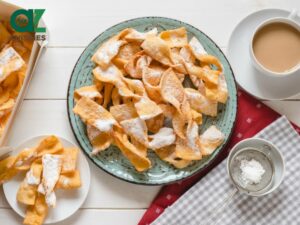
Angel wings are ribbon-shaped pastry that is fried and enjoyed with sugar.

Baklava is a layered filo pastry dessert popular in countries that were part of the Ottoman Empire.

Bánh includes various Vietnamese cakes, pastries, noodles, etc., often made from rice or wheat flour, and encompassing both sweet and savory varieties; each has unique ingredients, preparation, and cultural value.

Bánh bao is a Vietnamese steamed bun made with yeasted dough and a savory ground pork filling.

Bánh bèo is a type of small, steamed rice cake from Central Vietnam, often topped with savory ingredients and served with a sweet and spicy fish sauce for dipping.

Bánh bò is a Vietnamese sponge cake, known for its sweet taste and chewy texture with a honeycomb-like interior.
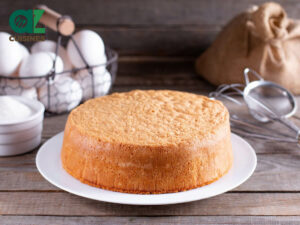
Bánh bông lan is a light and airy Vietnamese sponge cake, often flavored with various ingredients.

Bánh bột chiên is a Vietnamese dish of Chinese origin, consisting of fried rice flour dough served with pickles and soy sauce.

Bánh bột lọc is a traditional Vietnamese dumpling made from tapioca flour, typically stuffed with shrimp and pork and wrapped in a translucent dough.
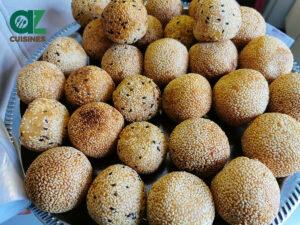
Bánh cam is a Vietnamese deep-fried glutinous rice ball filled with sweet mung bean paste and dipped in sugar syrup.

Bánh căn is a Vietnamese mini pancake often found in the central region, featuring rice flour batter and various toppings.

Bánh canh is a Vietnamese noodle soup with thick strands of tapioca or rice noodles, meat toppings, herbs, and broth.
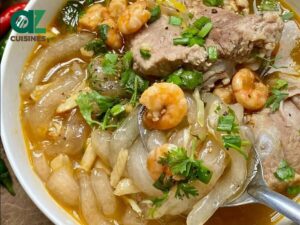
Bánh canh bột lọc is a Vietnamese thick noodle soup with noodles made using cassava flour or a mix of tapioca and rice flour.
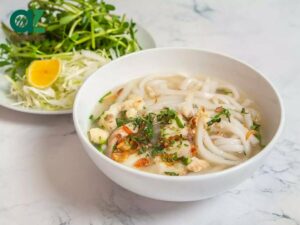
Bánh canh cá lóc is a rustic Vietnamese noodle soup made with thick rice noodles, snakeheads, and broth.
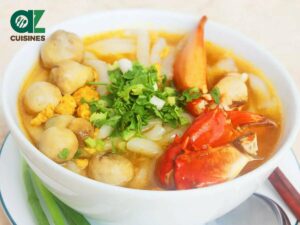
Bánh canh cua is a Vietnamese noodle soup made with thick noodles, crabs, pork, and a rich broth.
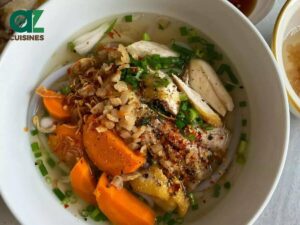
Bánh canh gà is a Vietnamese thick noodle soup with chicken as the main topping.
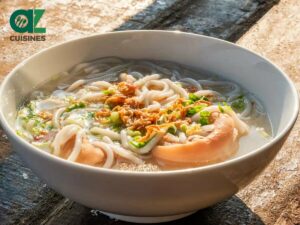
Bánh canh giò heo is a Vietnamese noodle soup consisting of thick rice noodles and pork knuckles or pork trotters.

Bánh cáy is a traditional treat from Thai Binh, Vietnam, combining sticky rice with gac and gardenia fruits.
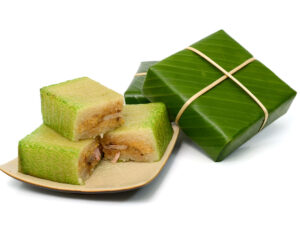
Bánh chưng is a Vietnamese square sticky rice cake made of glutinous rice, mung beans, and pork, all wrapped in lá dong leaves.
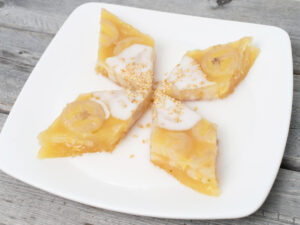
Bánh chuối is a Vietnamese dessert, essentially a sweet banana cake or bread pudding, mainly made with ripe bananas or plantains, rice flour, coconut milk, and sugar.
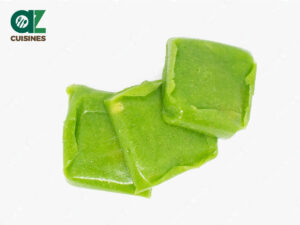
Bánh cốm is a Vietnamese snack with green glutinous rice and mung bean filling, often used in celebrations and festivals.
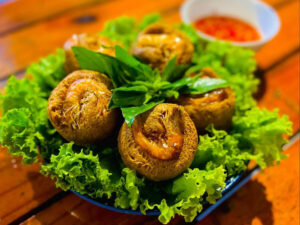
Bánh cống is a Vietnamese fried rice flour-based dish hailing from Soc Trang province in the southern region.
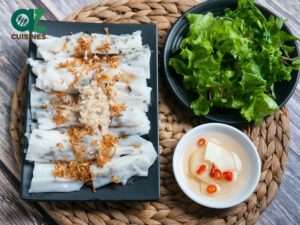
Bánh cuốn is a Vietnamese dish hailing from the northern region and consisting of various savory ingredients rolled in thin rice noodle sheets.
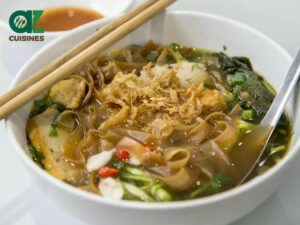
Bánh đa cua is a Vietnamese noodle soup from Hai Phong, featuring flat rice noodles, crab-and-pork broth, and various toppings.
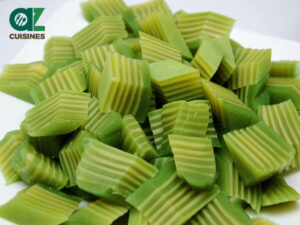
Bánh da lợn is a Vietnamese layered cake that features a soft, chewy texture with typically green and yellow hues.
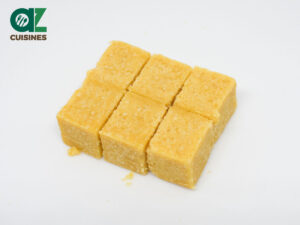
Bánh đậu xanh is a Vietnamese mung bean pastry usually produced in Hai Duong province.
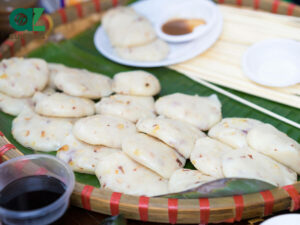
Bánh đúc is a traditional Vietnamese cake made from rice flour or tapioca flour and served with various foods.
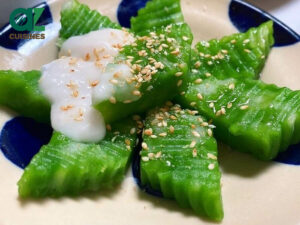
Bánh đúc lá dứa is a sweet Vietnamese dish made from rice flour, pandan juice, coconut milk, and sugar syrup.
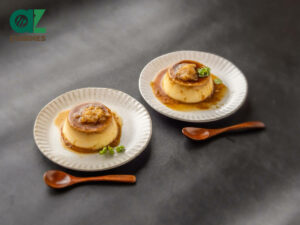
Bánh flan is a beloved Vietnamese dessert made from eggs, milk, and caramel.
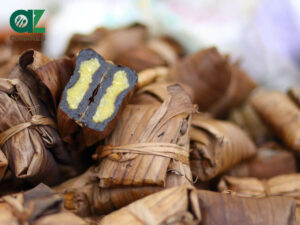
Bánh gai is a Vietnamese dessert made from glutinous rice and ramie leaf for a black color.
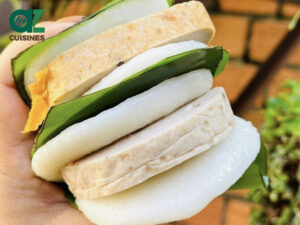
Bánh giầy is a round Vietnamese sticky rice cake made from glutinous rice.
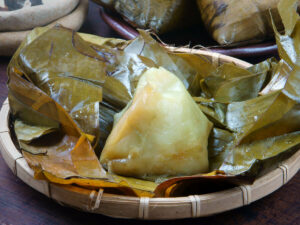
Bánh giò is a Vietnamese steamed savory rice cake wrapped in banana leaves with pork and mushroom filling.
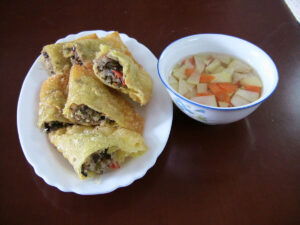
Bánh gối is a Vietnamese crescent-shaped savory pastry filled with ingredients such as minced pork, mushrooms, and noodles.
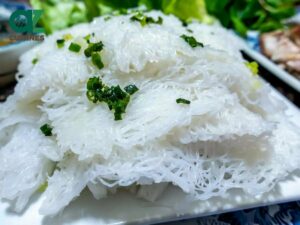
Bánh hỏi is a Vietnamese side dish prepared by weaving rice vermicelli into flat, rectangular bundles.
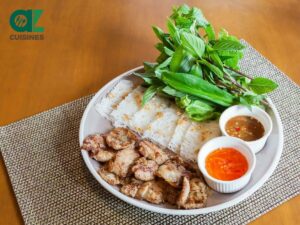
Bánh hỏi heo quay is a Vietnamese dish made with woven rice vermicelli, roast pork belly, herbs, and dipping sauce.
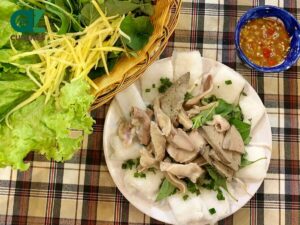
Bánh hỏi lòng heo is a Vietnamese dish popular in the central region, made with woven rice vermicelli, boiled pork belly, and pork offal.
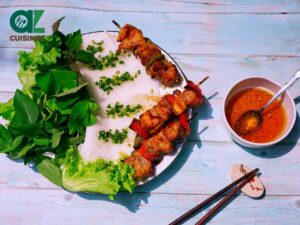
Bánh hỏi thịt nướng is a dish in Vietnam that brings together woven rice vermicelli, grilled pork, scallion oil, and Vietnamese dipping sauce.
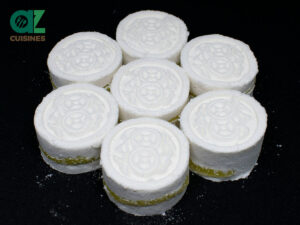
Bánh in is a Vietnamese cake craft from glutinous rice flour, mung beans, and sugar, and shaped by molds.
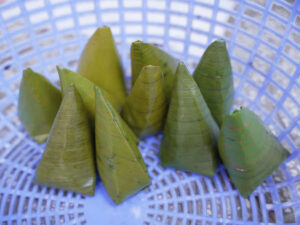
Bánh ít is a popular Vietnamese cake made from glutinous rice flour and mung bean using a steaming method.
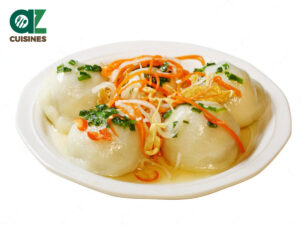
Bánh ít trần is a Vietnamese steamed glutinous rice cake hailing from the central and southern regions, usually filled with savory ingredients.
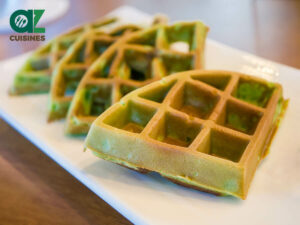
Bánh kẹp lá dứa is a Vietnamese waffle with harmonious hints of coconut milk and pandan leaves.

Bánh khảo is a block-shaped cake with an outer layer made of glutinous rice flour and a sweet filling that is derived from the Choang ethnic group.
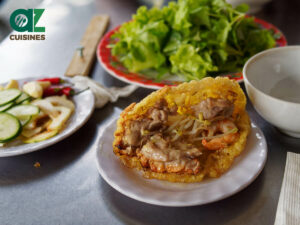
Bánh khoái is a Vietnamese pancake dish originating in Central Vietnam, especially in Thua Thien Hue Province.
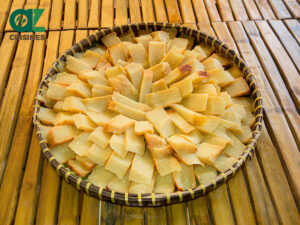
Bánh khoai mì is a Vietnamese cake made from grated cassava, sugar, and coconut milk, baked until it forms a golden crust.
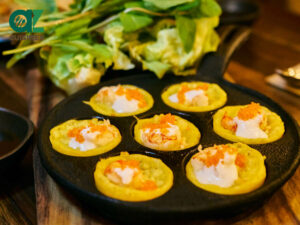
Bánh khọt is a Vietnamese savory mini pancake made from rice flour and is topped with shrimp for serving with a dipping sauce.

Bánh lá dừa is a Vietnamese cake in the Mekong Delta, made with glutinous rice and wrapped in coconut leaves.
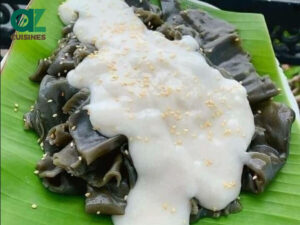
Bánh lá mơ is a Vietnamese cake hailing from the Mekong Delta, with rice flour and mơ leaves as the main ingredients.

Bánh mì is a Vietnamese sandwich with meats, pickled veggies, and sauces in a short baguette.
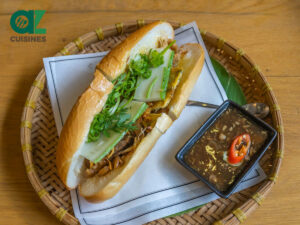
Bánh mì gà is a Vietnamese sandwich made with Vietnamese-style baguettes and chicken.
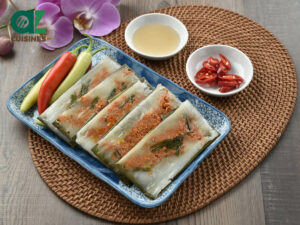
Bánh nậm is a Vietnamese dumpling from Central Vietnam, wrapped in banana leaves and made with rice flour, shrimp, and pork.
Dishes by Country
Dish Images
How Are Dishes Named?
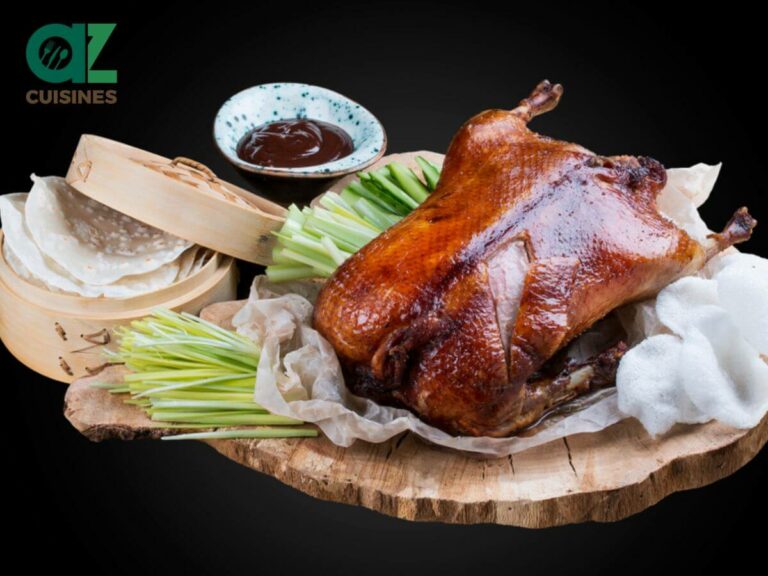
The naming of dishes in various cuisines can be influenced by 6 different factors. Here is a simple breakdown:
Places
Some dishes are named after their place of origin, like “Cullen skink,” a Scottish soup named after a town in Scotland.
People
Certain dishes are named after individuals who created or inspired them. For example, beef Wellington is named after Arthur Wellesley, the 1st Duke of Wellington.
Ingredients and Preparation
Many dishes have names that describe their main ingredients or cooking methods, such as “fried fish.”
Another example is chicken tikka masala, this dish is named after its key elements – chicken tikka (grilled chicken chunks) and masala (a mixture of spices).
Evolution in Different Contexts
In cuisines like Filipino and Singaporean, the same dish name can have a different meaning or preparation style compared to its original version in another cuisine.
One clear example is adobo with different meanings in Filipino (meat in vinegar and soy sauce) and Mexican (spicy red sauce) cuisines.
Unique or Creative Names
Some dishes have more creative or unique names that reflect an aspect of the dish or its appearance.
For instance, Toad in the Hole, a traditional English dish consisting of sausages in Yorkshire pudding batter, with a name that playfully describes its appearance.
Adaptation or Fusion Naming
Names that reflect a fusion of different culinary traditions or modern adaptations.
California roll is a clear example, it is a type of sushi roll that reflects a Western adaptation of the Japanese sushi tradition.
This diversity in naming reflects how dishes are categorized in various culinary traditions, showcasing food’s role in cultural identity and history.
How Are Dishes Categorized in Different Culinary Traditions?
In different culinary traditions, dishes are often categorized based on various factors, including their role in a meal, ingredients, preparation methods, and cultural significance. Here’s a brief overview:
National Dishes
These are dishes that are widely considered to represent a particular country or culture. For example, sushi is often associated with Japan, tacos with Mexico, and pizza with Italy.
Traditional Dishes
These dishes have historical significance and are often passed down through generations.
They are typically prepared using time-honored methods and ingredients that are local or indigenous to the region. Examples include French Coq au Vin and Indian biryani.
Street Food Dishes
These are ready-to-eat foods and beverages sold by vendors or hawkers, particularly in outdoor settings like markets or fairs.
Street food dishes are often characterized by their ease of consumption and strong flavors. Examples include Thai Pad Thai served on the streets of Bangkok and New York City’s hot dogs.
Fusion Dishes
Fusion cuisine combines elements of different culinary traditions. These dishes often incorporate ingredients or techniques from two or more ethnic or regional cuisines.
Popular examples include sushi burrito (Japanese sushi and Mexican burrito fusion), Thai green curry spaghetti (combining Thai flavors with Italian pasta), and ramen burger (blending Japanese ramen with American hamburgers).
Seasonal Dishes
Some dishes are tied to specific seasons or festivals. For instance, mooncakes are traditionally eaten during the Mid-Autumn Festival in China.
Diet-Specific Dishes
With the rise of dietary preferences and restrictions, many cuisines now feature dishes catering to vegetarian, vegan, gluten-free, or keto diets, among others.
Each of these categories reflects the key factors that influence dishes around the world, such as local ingredients, historical context, and evolving dietary needs.
What Are the Key Factors that Influence Dishes Around the World?
The key factors that influence dishes around the world are quite diverse and interrelated. Here are 8 of the most significant:
Local Ingredients
The availability of local ingredients, like seafood in coastal areas or agricultural produce in inland regions, heavily influences regional dishes.
Cultural Traditions
Dietary practices stemming from religious beliefs or cultural traditions, such as vegetarianism in Hindu culture or halal in Islamic culture, play a significant role.
Historical Influences
Historical events, like trade and colonization, have introduced new ingredients and cooking methods, altering regional cuisines.
Climate and Geography
The climate affects the type of food that can be grown, which in turn influences local dishes, like the use of olives in Mediterranean cuisine.
Economic Factors
The economic status of a region can determine the complexity and variety of its cuisine.
Societal Structure
The social structure, including family dynamics, influences the nature of meals, with some cultures emphasizing shared family dishes.
Culinary Techniques
Unique cooking techniques developed in different regions, such as smoking in the American South or steaming in East Asia, define their cuisines.
Migration and Globalization
The movement of people and globalization introduce new cuisines and create fusion dishes, like the worldwide spread of Indian curries.
These factors collectively explain how a dish develops different regional variations, adapting to the unique blend of local conditions, cultural influences, and historical contexts.
How Does A Dish Develop Different Regional Variations?
The development of regional variations in dishes is a fascinating aspect of cuisine, influenced by various factors.
These variations can manifest within a single country or span across multiple countries. Let’s explore this through clear examples of specific dishes that are famous for their regional variants:
| Factors | Impacts | Examples & Variations |
|---|---|---|
| Availability of Local Ingredients | A dish can vary significantly based on locally available ingredients. | Italian Neapolitan Pizza: Uses local ingredients like San Marzano tomatoes and Mozzarella di Bufala. American Chicago Deep-Dish Pizza: Features a thicker crust, heavy cheese, and meat, reflecting local taste and ingredient availability. |
| Cultural and Historical Influences | The Interaction of cultures through trade or migration blends culinary techniques and ingredients. | Indian Curry: Rich in spices like cumin and coriander, reflecting India’s spice trade history. Japanese Curry: Adapted to local taste with a thicker, sweeter sauce and ingredients like carrots and potatoes. |
| Adaptation to Local Tastes and Preferences | A dish can evolve to cater to the palate preferences of a region’s population. | Southern U.S. Fried Chicken: Heavily seasoned with spices and served crispy. Korean Fried Chicken: Often double-fried for extra crispness and coated with spicy or sweet glazes. |
| Innovation in Cuisine | Experiment with traditional recipes, creating new regional variations. | Traditional Vietnamese Bánh Mì: Incorporates ingredients like baguette, meats, pickled veggies, and sauces. Modern Vietnamese Bánh Mì Variations: Adapted with additional fillings like heo quay (roasted pork belly), xíu mại (pork meatballs in tomato sauce), phá lấu (braised pork offal stew with fragrant spices), and so on. |
| Religious or Cultural Dietary Restrictions | These can greatly influence the ingredients and preparation methods of a dish. | Indian Hindu regions’ Biryani: Often prepared with vegetables or chicken. Indian Muslim-dominated regions’ Biryani: Prefer beef or mutton, with variations in spices and cooking techniques. |
What Is The Role of Dishes in Cultural and Religious Ceremonies?
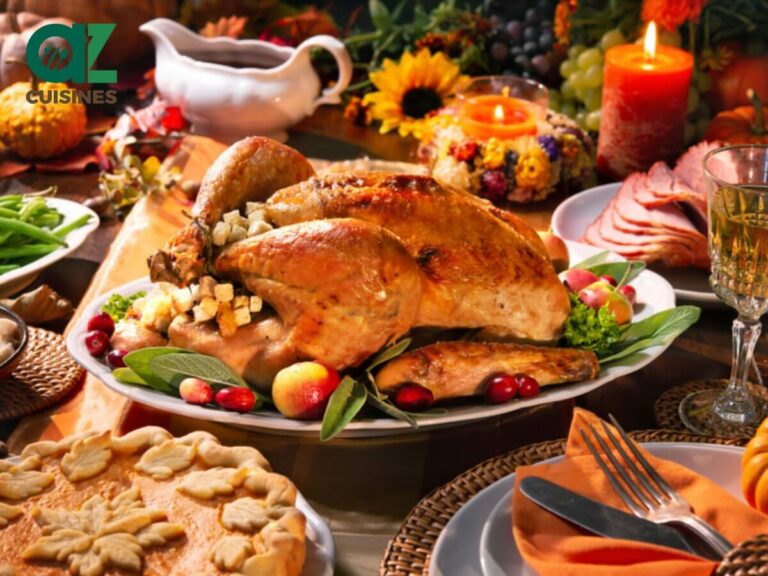
Dishes are central to cultural and religious ceremonies worldwide, symbolizing beliefs, fostering community, and preserving traditions. Seven key roles of dishes in these ceremonies include:
Symbolism
Food items often represent specific beliefs or historical events. For instance, in Christianity, bread and wine in the Eucharist symbolize the body and blood of Christ. During Jewish Passover, matzah signifies the Israelites’ hurried escape from Egypt.
Community Building
Sharing meals in religious and cultural ceremonies strengthens social bonds. A prime example is the Islamic practice of Iftar during Ramadan, where families and communities come together to break their fast.
Rituals and Traditions
Ceremonies frequently involve food-related rituals passed down through generations. Hindu weddings, for example, include rituals with sweets and other foods, each carrying a symbolic meaning for the couple’s future.
Honoring the Divine or Ancestors
Many cultures offer food to gods, spirits, or ancestors as a sign of respect or worship, such as the Chinese tradition of food offerings during the Qingming Festival or the Mexican Dia de los Muertos.
Fasting and Abstinence
In many religious practices, fasting or avoiding certain foods is a form of self-discipline and sacrifice. This is observed in Christian Lent or Jewish Yom Kippur.
Seasonal and Harvest Celebrations
Agricultural cycles often dictate cultural festivals where food is a central element. Examples include the Mid-Autumn Festival with mooncakes in Chinese culture and the harvest-themed Thanksgiving in the United States.
Cultural Identity and Continuity
Food helps maintain cultural identity and heritage, connecting communities to their past and ensuring the transmission of traditions to future generations.
This vital role of dishes in ceremonies across the globe also highlights the diversity and richness of famous dish types worldwide, each telling a unique story of its culture and people.
What Are Famous Dish Types Worldwide?
Here are 6 of the most popular dish types found in dishes across countries:
Noodle Soups
A staple in various Asian cuisines, featuring noodles in a rich broth with diverse toppings. Popular examples include Vietnamese phở, Japanese ramen, and Chinese wonton soup.
Curries
Integral to Asian and Caribbean cooking, these are spiced, sauce-based dishes with meat or vegetables. Widely known curries include Indian chicken tikka masala, Thai green curry, and Japanese katsu curry.
Pancakes
Versatile flat cakes found worldwide, either sweet or savory. Famous varieties include French crêpes, American pancakes, and Japanese okonomiyaki.
Sandwiches
A global staple consisting of fillings between bread slices. Classic examples are the American BLT, Vietnamese bánh mì, and Cuban sandwich.
Desserts
Sweet treats concluding meals in various cuisines. Notable desserts are Italian tiramisu, American cheesecake, and Indian gulab jamun.
Stir-fries
A quick cooking method from China, rapidly frying ingredients in hot oil. Famous stir-fries include Chinese chow mein, pad Thai, and Japanese yakisoba.
The ones mentioned are just the start; there are so many other dish types waiting for you. Check out this comprehensive guide for an in-depth look at an array of dish types worldwide.
Each of these dishes showcases a rich array of typical ingredients used in various cuisines, reflecting the unique flavors and culinary traditions of their respective cultures.
What Are Some Typical Ingredients Used in Dishes?
Typical ingredients used in dishes vary widely depending on the cuisine, but some common ones include:
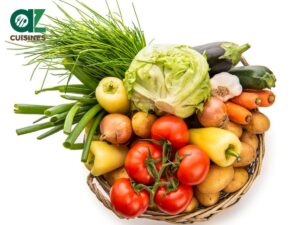
Vegetables
Onions, garlic, tomatoes, carrots, and other leafy greens.

Meat or Seafood
Chicken, beef, pork, fish, lamb, and mutton, etc.
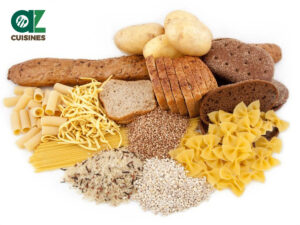
Starches
Rice, pasta, bread, potatoes, and so on.

Herbs and Spices
Salt, pepper, basil, oregano, cumin, and turmeric.
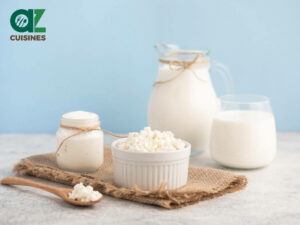
Dairy
Milk, cheese, yogurt, etc.

Fats and Oils
Olive oil, vegetable oil, butter, and ghee.
These ingredients form the basis of countless recipes and can be combined in various ways to create diverse and flavorful dishes. Explore further about dishes’ ingredients in this guide for a deeper understanding of culinary possibilities.
The versatility of these ingredients is enhanced through various cooking methods, adding depth and diversity to the culinary experience.
What Are Different Cooking Methods Frequently Employed in Dish Preparation?
Below are 8 common cooking techniques to prepare dishes:
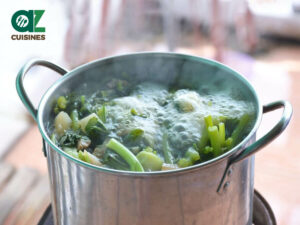
Boiling
Common for pasta, vegetables, and eggs.
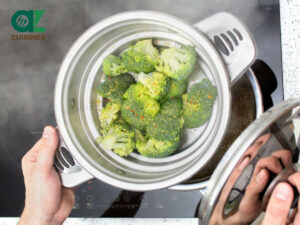
Steaming
Ideal for vegetables and seafood, preserving nutrients and texture.
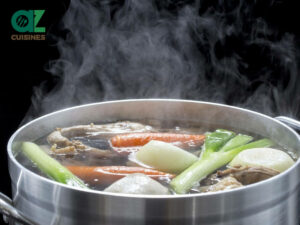
Simmering
Perfect for broths, stews, sauces, etc.
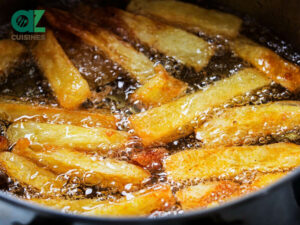
Frying
Deep frying is for items like chicken or potatoes, pan-frying suits thinner cuts of meat or pancakes, while sautéing is great for vegetables, small meat pieces, and stir-fries.

Baking
Used for bread, pastries, casseroles, and roasted meats.
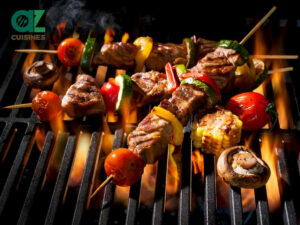
Grilling
Perfect for meats, fish, and vegetables, adding a smoky flavor.
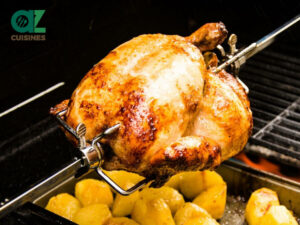
Roasting
Ideal for large meat cuts, poultry, and root vegetables, enhancing flavor through caramelization.

Braising
Suitable for tougher meat cuts and stews, making them tender.
For more detailed information, explore a detailed guide on cooking techniques to enhance your culinary skills.
Understanding these diverse cooking methods is crucial as they play a significant role in how dishes are organized to create courses in a traditional meal, ensuring a harmonious and balanced dining experience.
How Are Dishes Arranged to Form Courses in A Traditional Meal?
In a traditional meal, dishes are arranged and paired into courses based on their flavor, texture, and how filling they are. Typically, the sequence is as follows:
Appetizer or Starter
Small, light dishes to stimulate the appetite. These are often salads, soups, or finger foods.
Main Course
The heartiest, most substantial dish of the meal. It usually includes protein (like meat or fish), carbohydrates (like potatoes or rice), and vegetables.
Dessert
Sweet dishes to conclude the meal. This can be anything from cakes and pastries to fruit or cheese.
In more elaborate meals, there can be additional courses like a soup course, a salad course, and a cheese course. To know more about these courses, let’s check this in-depth guide.
In a traditional meal, the arrangement of dishes into courses focuses on both flavor and the aesthetic presentation of each dish, which is crucial for an enriching dining experience.
What Is the Importance of Presentation in Dishes?
The presentation of dishes is crucial in the culinary world for 5 primary reasons:
First Impressions
It creates a positive first impression, as seen in the meticulous arrangement of Japanese sushi platters.
Enhances Taste and Quality
Visually appealing food is often perceived as tastier. For example, the elegant plating of French desserts like soufflés can make them seem more delicious.
Cultural Expression
The presentation reflects the cultural heritage, like the vibrant colors and garnishes in Indian cuisine that showcase its diversity.
Emotional Connection
Beautifully presented dishes, such as carefully plated Italian pasta, can evoke emotions and memories.
Showcases Culinary Innovation
Chefs use presentations to exhibit creativity, especially in trends like molecular gastronomy, where the presentation is often unique and surprising.
The artful presentation of dishes not only pleases the eye but also sets the stage for how dishes and beverages pair with each other to create a harmonious dining experience.
How Do Dishes and Beverages Complement Each Other?
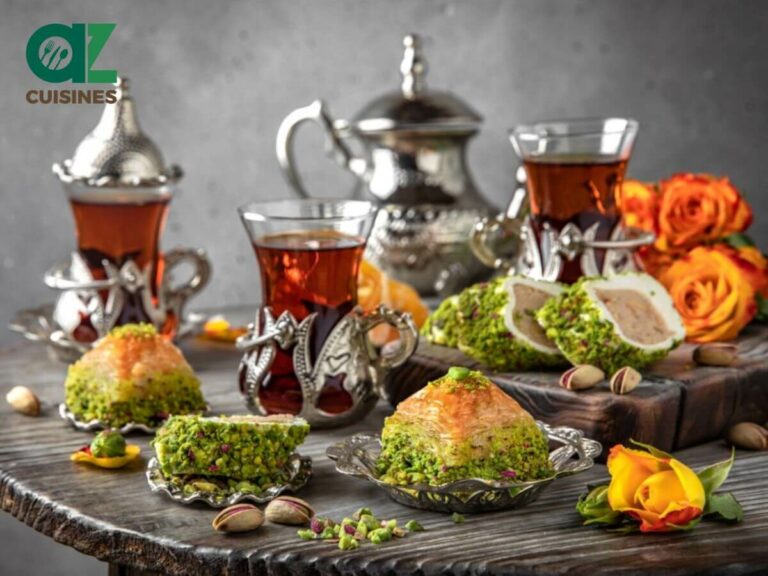
Dishes and beverages can complement each other in several ways, enhancing the overall dining experience. Here are 7 main aspects of how they work together:
Flavor Pairing
Beverages and dishes are often paired based on complementary or contrasting flavors. For example, red wine is typically paired with red meat, and white wine with fish, to balance the overall taste.
Texture and Mouthfeel
The texture of beverages can contrast with food, like a sparkling drink with a creamy dish, to cleanse the palate and enhance the dining experience.
Enhancing Flavors
Some drinks, like certain wines, can intensify specific flavors in a dish, such as the tannins in red wine enhancing savory meat dishes.
Cultural Pairings
Traditional cuisines often have classic pairings, like Japanese sake with sushi, based on cultural practices.
Temperature Contrast
The temperature of drinks versus food can add contrast, such as a cold beverage with a hot dish or vice versa.
Dietary Balance
Beverages can provide nutritional balance to a meal, like green tea aiding digestion.
Mood and Setting
The choice of drink can also set the mood or suit the occasion, like champagne for celebrations.
Now that you’ve explored how dishes and beverages work together, let’s get to know about the differences between dishes and foods, and how these distinctions play a role in our culinary experiences.
Dishes vs. Foods: How Do They Differ?
“Dishes” and “foods” are terms often used interchangeably in everyday language, but they do have distinct meanings, especially in culinary contexts.
While all dishes are foods, not all foods are dishes. A dish is a specific preparation or arrangement of food, usually with a name and recipe, while food is a more general term that refers to anything edible.
| Aspect | Dishes | Foods |
|---|---|---|
| Definition | Dishes refer to specific preparations or recipes of food. | Food is any substance consumed for nutritional support and energy. |
| Origin | Often culturally specific, reflecting local ingredients and traditions. | Can be of plant, animal, or fungal origin. |
| Preparation | Involves cooking techniques, seasoning, and presentation. | Can be raw, processed, or formulated. |
| Consumption Context | Served in specific settings like meals or as part of culinary traditions. | Consumed by organisms to provide energy, maintain life, or stimulate growth. |
| Nutritional Aspect | May focus on taste, texture, and culinary experience. | Primarily focused on providing essential nutrients. |
| Cultural Significance | Reflects cultural heritage, traditions, and regional flavors. | Universal need but varies in form and type across cultures. |
| Varieties | Numerous, based on cuisine types and cooking methods. | Broad, encompassing all edible substances. |
Also, take a moment to look at the frequently raised questions concerning dishes.


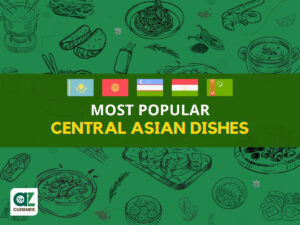
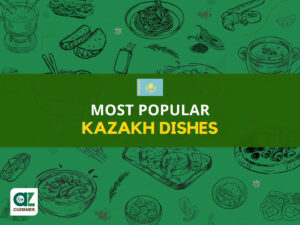
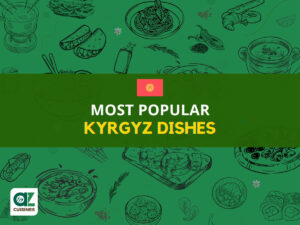


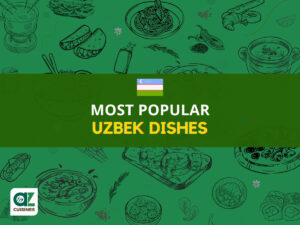
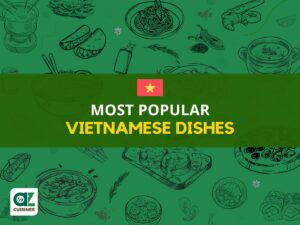
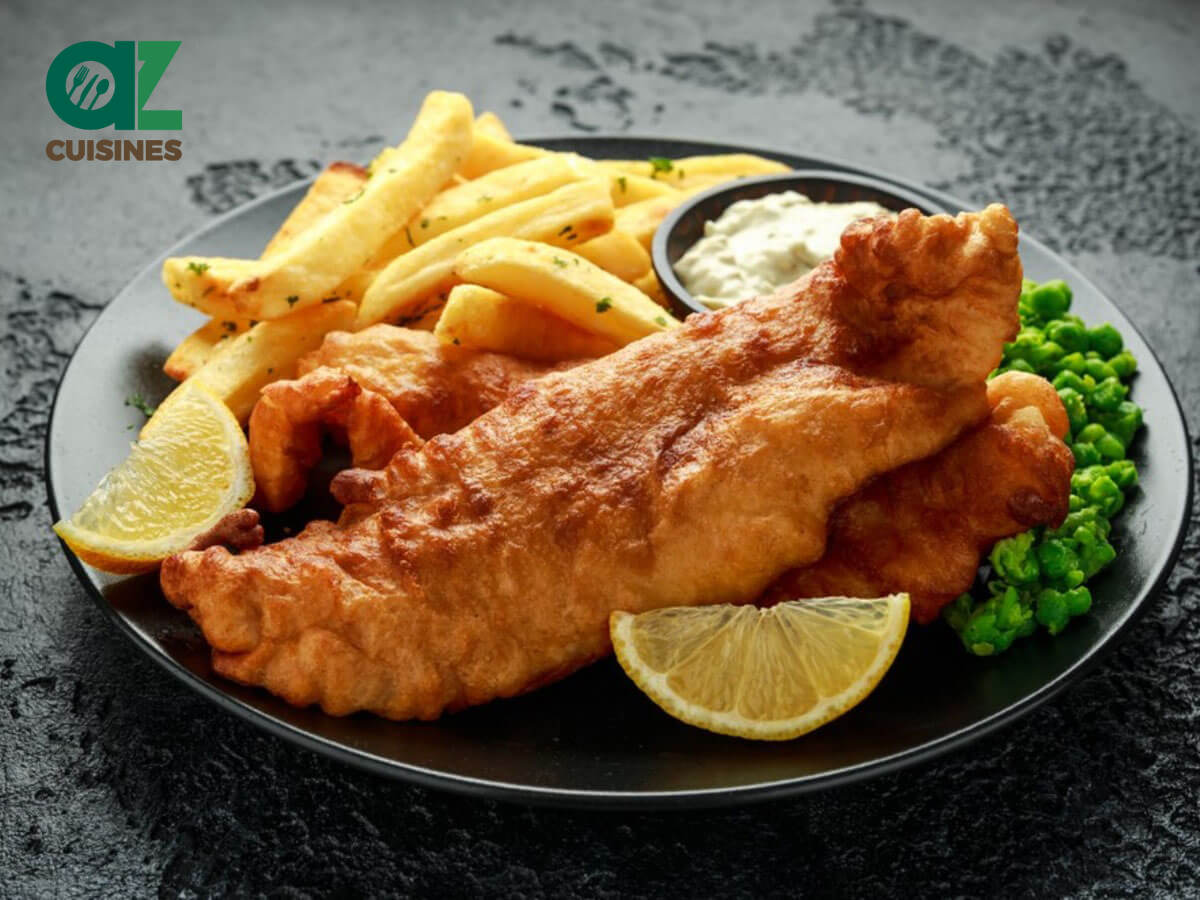

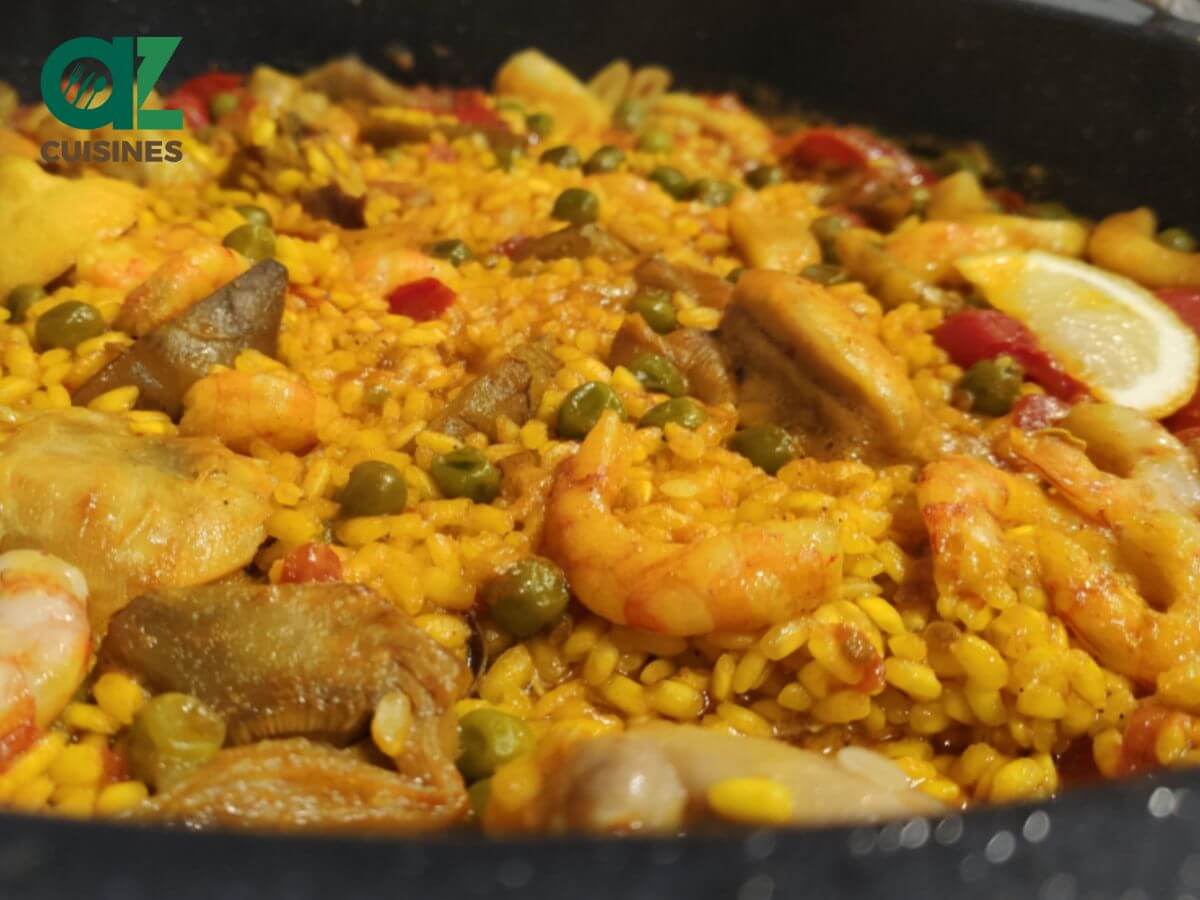

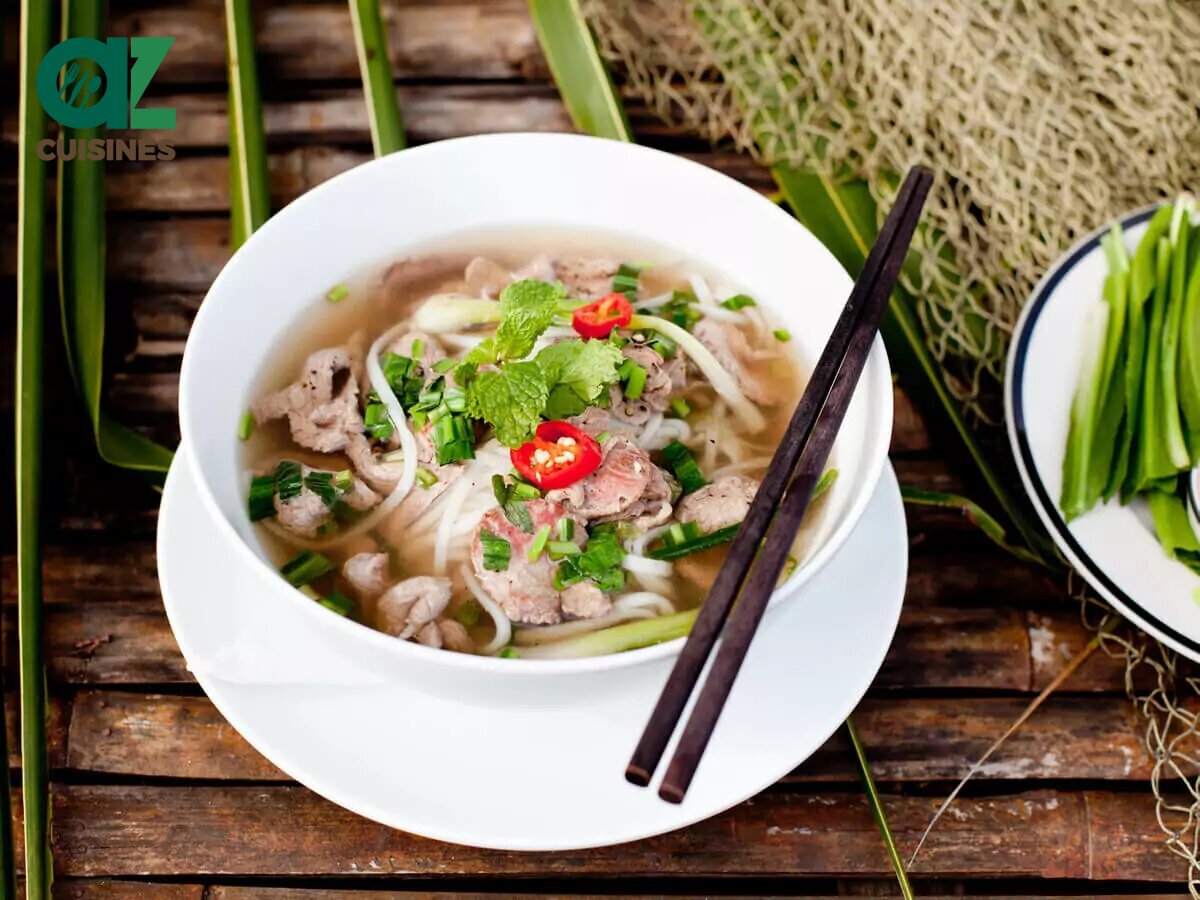
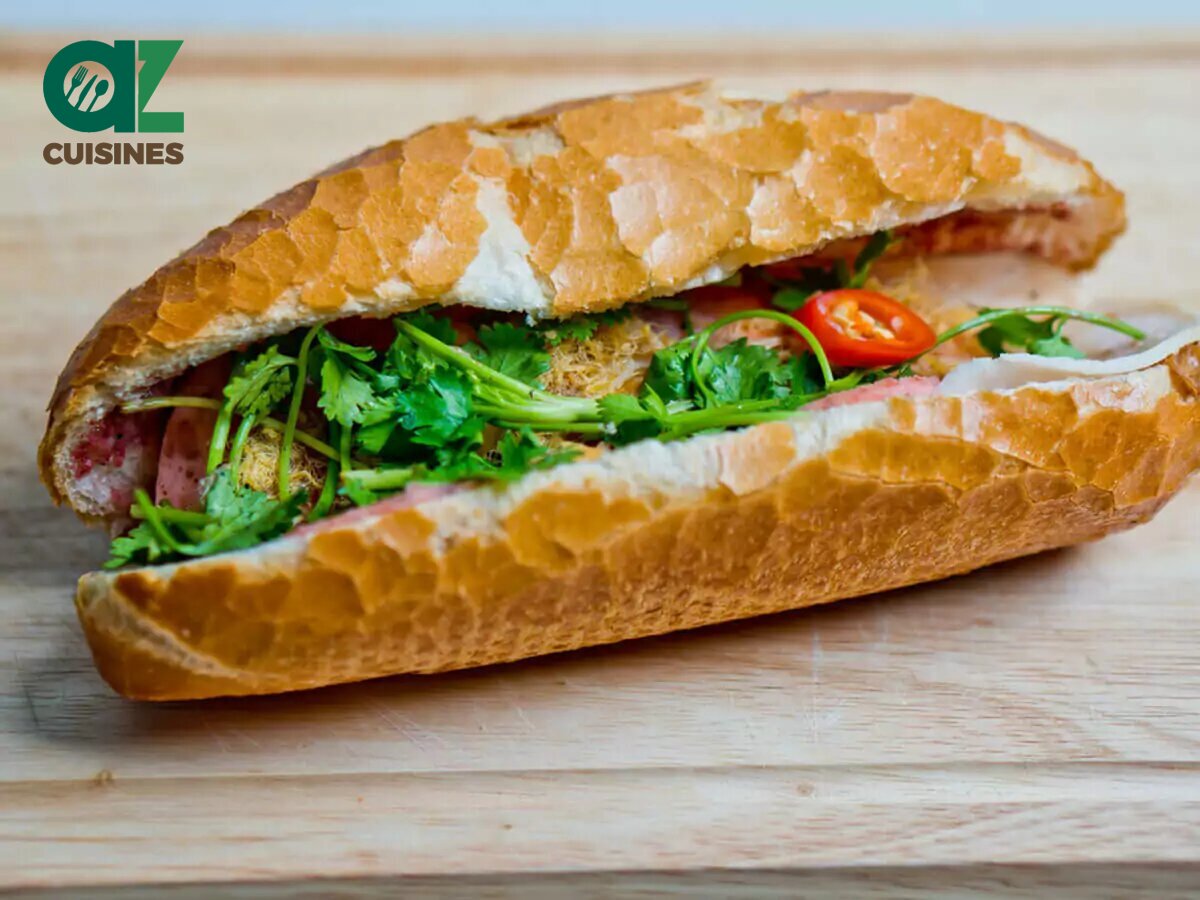
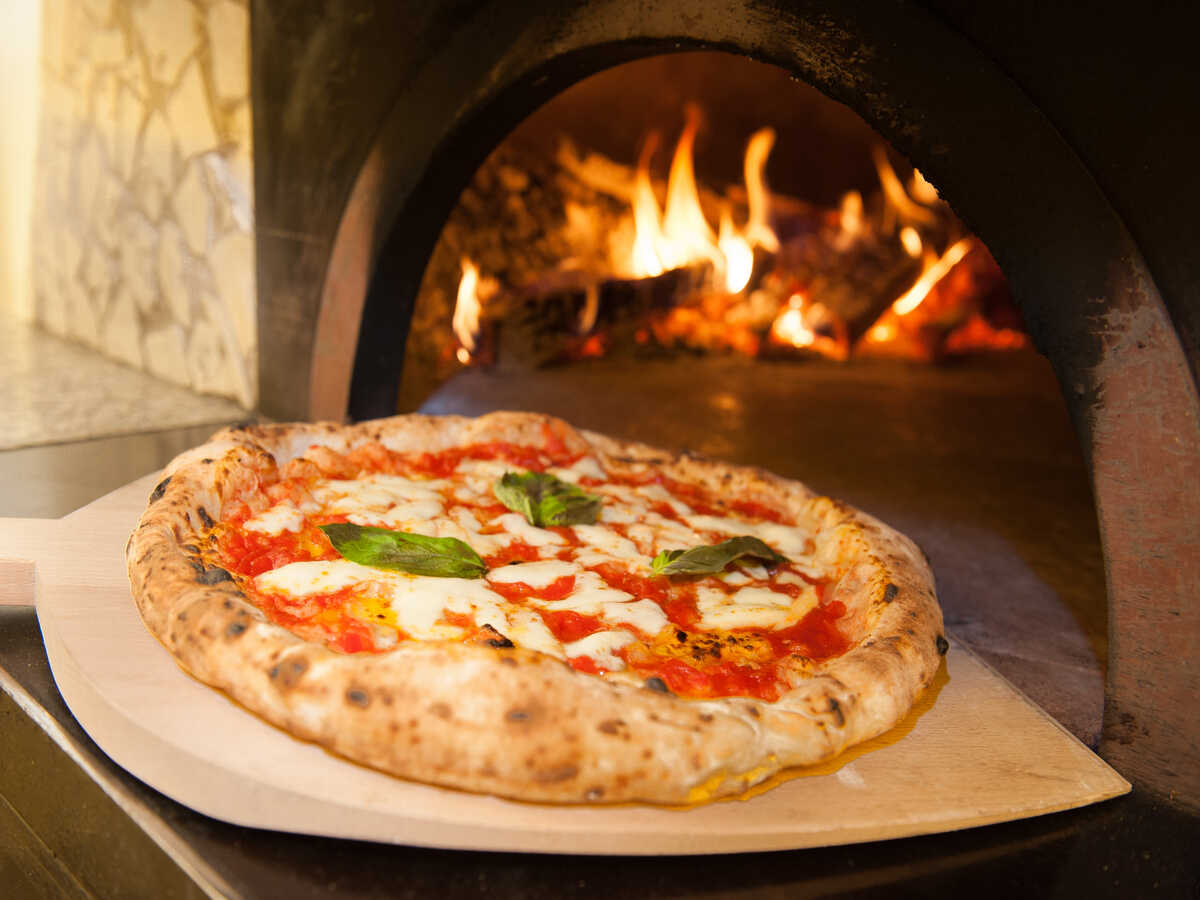
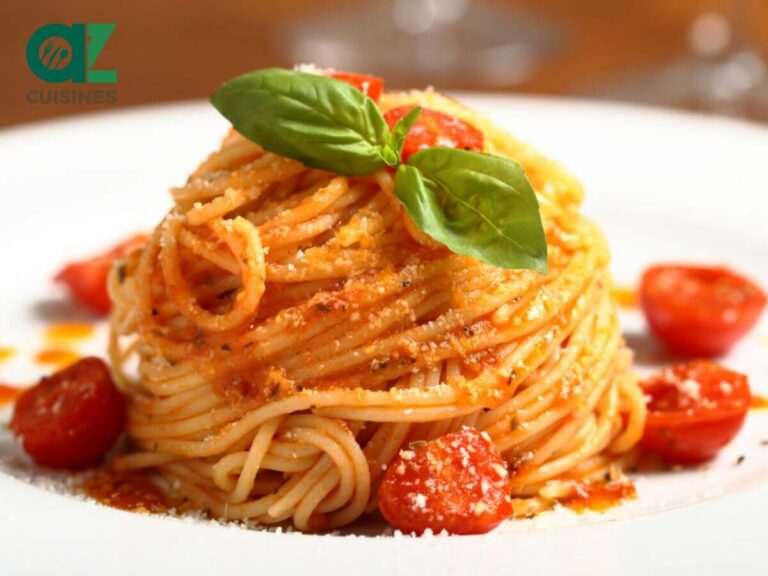
Adam Sam
Senior Food and Drink Editor
Expertise
Food Writer & Recipe Developer, Recipe Tester, Bartender, Cooking-video Maker, Editor In Chief
Education
Adam Sam, an experienced food writer and recipe developer, is passionate about blending diverse culinary traditions, national dishes, and innovative beverages, showcasing his proficiency in both traditional and modern recipe testing.
As the Editor-in-Chief, he elevates culinary content from street food to fine dining, focusing on Western cuisine and types of drinks at azcuisines.com, and is professional in creating engaging cooking videos that simplify complex dishes and ingredients.
His passion for food is evident in his writing, where he uniquely merges various cultures, traditions, and contemporary trends, skillfully combining classic recipes with modern cooking methods.